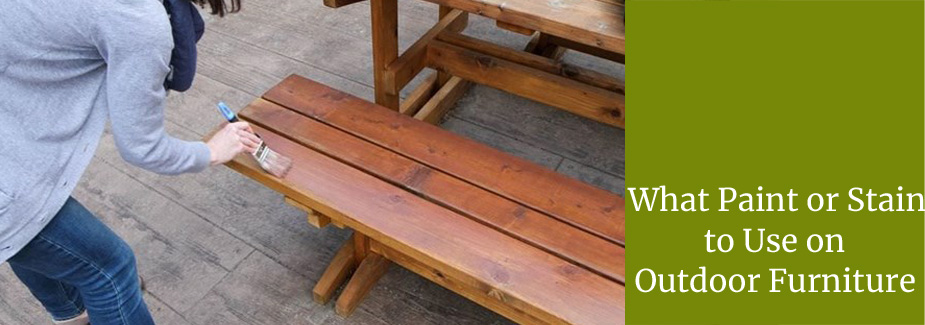
Outdoor furniture can add beauty, comfort and enjoyment to practically any place outside. But because this furniture will be spending much if not all of its life outdoors, it needs protection from rain, wind-blown dust and debris and inclement weather in general. Even perfectly sunny days can wear on some kinds of outdoor furniture, thanks to the damaging properties of the sun's ultraviolet rays.
Many types of materials, including wood, metal and plastic are used to make outdoor furniture. Although some outdoor furniture materials require little or no treatment to resist the elements, many others benefit from painting or staining. You may also simply want to paint a piece of outdoor furniture to match it with a new design scheme or to perk up its appearance. Here are some tips from Outdoor Furniture Plus for choosing and using the best paint or stain for outdoor furniture, no matter what material your outdoor furniture is made of.
Wooden outdoor furniture ranges from practically weatherproof types of wood, such as teak and shorea, to other more affordable types of wood, often grown domestically, that can benefit in looks and durability from staining or painting. Pine is just one such type of inexpensive wood that can be enhanced in appearance and lifespan with the right treatment.
When painting bare wood, prime it first with a good, oil-based primer/sealer. For painted surfaces that you are stripping, a latex primer/sealer is OK. After the primer/sealer has dried, you can apply a coat of good latex paint using a paint brush or sprayer. A second coat after proper drying time can enhance looks and durability.
For staining wood, pick from oil-based or water-based stains. Strong-smelling oil-based stains will seep into the wood and won't raise the grain. Water-based stains are more environmentally friendly and offer a smart alternative. It's also easier to clean painting tools and spills with water-based stains, which wipe up simply with soap and water. 
Apply just one coat. If you wish, you can apply more coats, although each will darken the final color. Remember to lightly sand in between coats. When staining outdoor wood furniture, applying a wood sealer and protectant after the final coat can help protect the finish.
Sturdy outdoor metal furniture can stand up to much abuse and time outside, but that doesn't mean it's impervious to Mother Nature. If you have wrought iron outdoor furniture or furniture made of other types of metal that's prone to rust, it's smart to repaint it. A simple paint job will help preserve your chairs, tables and other outdoor furniture as well as making it look like new again.
Make sure to clean each piece thoroughly and to scrape off any rust or other corrosion before painting. When the surface is dry and clean, spray it with a coat of rust-inhibiting primer, followed by another coat when dry. You may also use a paint brush, although spraying tends to give a more even coating. When the primer has dried, apply a rust-inhibiting paint in your choice of colors. Again, you may use a spray can or a paint brush, although spraying tends to give more even coverage.
Finally, although many types of polyresin furniture never require painting and won't crack, chip or split, some kinds of plastic furniture may need a little help with a fresh coat of paint. After you have cleaned your plastic chair or other piece, let it dry. Then paint it with a spray paint designed specifically for plastic. For best results, apply a second coat after letting the first one dry.

